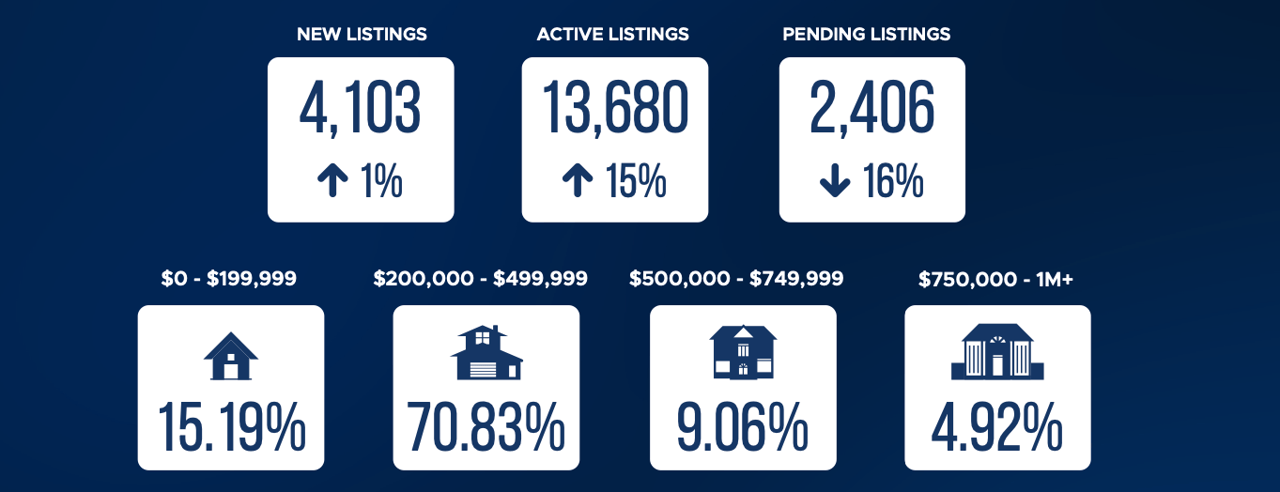The other day was the Federal Reserve meeting; their decision was another 75-basis point / ¾ point rate hike. Mortgage rates have surged to 14-year highs, deterring buyers, sellers, and builders, who have begun shifting to renting (homes, apartments, etc.) in anticipation of rates slowing or falling. However, the consensus is that rates aren’t expected to return to the sub-3 percent or sub-4 percent range any time soon. As a result, existing home sales nationally and regionally have declined sharply to nearly 30 percent below the January 2021 pandemic peak of 6.65 million and about 10 percent below the 2019 average of 5.24 million. Over the past year, home prices climbed another 15+/-% and, combined with increases in mortgage rates, have caused the cost of homeownership to surge 48 percent year-over-year with another 18+% next year. (Every time rates go up 1%, the consumer loses 12% of buying power. That’s just the cost of money, put on top of that the cost of labor and materials.). This has caused a housing inventory surge from less than a month in some Texas metros to 3+/- months since the first of the summer. While seeing a 200% surge in resale inventory usually would be a reason for concern, the markets still do not have enough inventory. Not enough to turn the market from a sellers’ market to a buyers’ market of 6+ months. While the short term, this may cause some concern compared to the previous two years. It is also what the red-hot market of the last two years needed, more inventory.
With rates increasing, the consumer historically waits to buy, hoping that rates and values will decline. Unfortunately for them, for the next 5+ years, mortgage rates and values will continue to rise due to inflation.
Those who rent, waiting for rates and values to temper, will be disappointed as they lose double-digit annual appreciation, 40+% buying power, and no tax write-off while enduring rent rate hikes (due to lack of inventory for several years.)
How does the Fed Impacts Mortgage Rates
With the Fed decision, we’re being asked how Fed moves impact mortgage rates. Many people believe the Federal Reserve, through the actions of the Federal Open Market Committee, directly impacts mortgage rates. However, it’s more direction from the speeches from Federal Reserve Committee members, announcements of what the Fed is doing, and its actions in the open market serve as useful predictors of future rate movement. I personally watch how the 11 different federal reserve governors are voting as well as what their commentary is.
Historically changes in the federal funds rate trigger a chain of events that affect other short-term interest rates, foreign exchange rates, long-term interest rates, the amount of money and credit, and a range of economic variables (e.g., employment, output, and the prices of goods and services). The federal reserve funds rate affects short-term loans, such as credit card debt and adjustable-rate mortgages. Long-term rates for fixed-rate mortgages are generally not affected by changes in the federal funds rate but track the 10-year U.S. Treasury yield much more closely.”
The Federal Reserve’s stated purpose is ‘Conducting the nation’s monetary policy by influencing money and credit conditions in the economy in pursuit of full employment and stable prices. The Fed has several tools available to increase or decrease the amount of money in the economy. Full employment results in greater demand for goods and services, which puts upward pressure on prices, i.e., inflation. Less than full employment decreases overall purchasing power and ability. Lower demand leads to stable or declining prices and slower inflation.
“Contrary to what many believe, the Federal Reserve only controls one interest rate, the federal funds rate (referred to often as the “benchmark rate”). This is the rate at which banks lend money to each other, typically overnight. Mortgage rates are determined by investors who purchase mortgages as an investment. The mortgage market is generically known as MBS or mortgage-backed securities. Investors want to make a profit; their decisions to purchase or not purchase any investment are based upon their opinion as to what they think will happen in the future and if their investment will be worth more or less money. In the case of MBS, this includes what they feel interest rates will be, or should be, in the future. Part of their decision-making criteria is what they feel the Fed will do regarding monetary policy, or what the Fed has announced it will do.”
What comes next for the Fed with inflation stubbornly high?
Even with all the Fed’s tightening so far, officials haven’t gotten much good news on the inflation front. (as the chart shows).
Consumer prices (CPI) in August cooled only slightly to 8.3 percent from their fresh 40-year high of 9.1 percent in June, primarily thanks to falling gas prices. Food prices, however, continued to heat up, with the cost of groceries rising the most since March 1979. Even more troublesome, rent climbed by the most since 1986, while medical care, insurance, and tuition costs also soared. Taken together, consumer prices excluding the volatile food and energy components ramped up in August, rising 0.6 percent from the month earlier and 6.3 percent from a year ago. (Also, know that real estate/rent equivalent is driving inflation.)
The job market hasn’t slowed much since the Fed’s first-rate hike in March. Job growth between June and August averaged 378,000, virtually unchanged from the prior three-month average of 384,000. Job openings, meanwhile, are still hovering at record levels and bounced back above 11 million in July, outnumbering the unemployed by almost two-to-one. Powell has called the labor market tight to an “unhealthy degree,” with demand significantly out of balance with supply.
Labor and materials continue to rise with little to no end for 5+ years.
The Fed has made it clear inflation is the No. 1 focus, but both factors will likely drive officials to raise rates even more before the end of 2022 and the likelihood of a point and a half next year.
What does this mean to you (the consumer)? The possibility of rates declining is slim over the next 3 to 5 years due to inflation. Those relying on their experience of the last 20+ years will see rates stay around 7+% or higher for the next 3+ years. In the interim, not only are they losing traction on purchasing capability (every time rates rise 1%, purchasing power declines 12%? Buyers have lost 36%buying power since March 2022 and will lose close to 48% by year-end 2022. Values continue to improve (although they have slowed over the last six months.) If you are waiting, you’re losing buying power plus appreciation. But on top of that, rents are escalating from the high single digits to the high 20s annually. Waiting is going to be expensive!
If rates miraculously decline, you can refinance. But, ultimately there is not a better time to buy! Let us know what questions/concerns you may have.
Sources:










